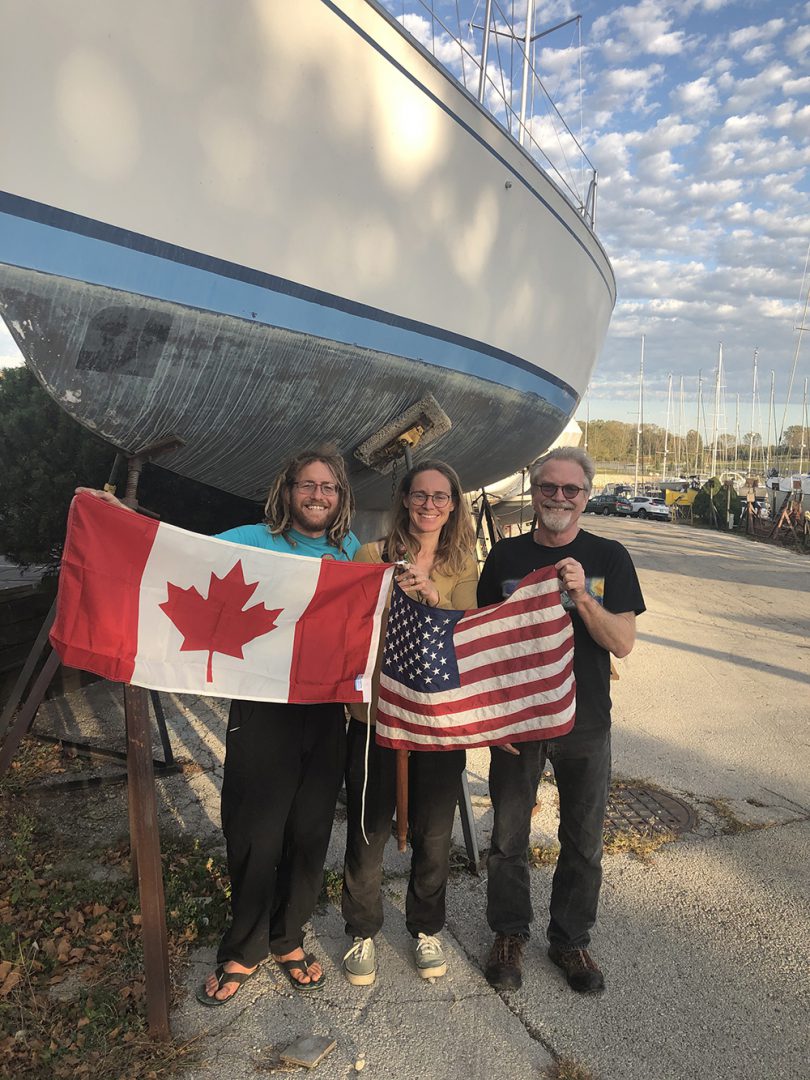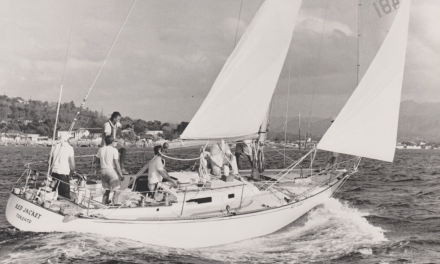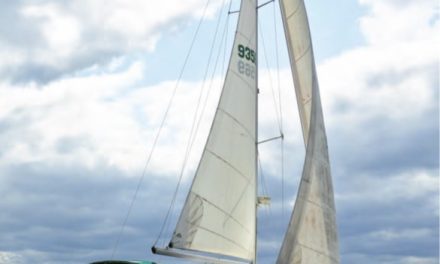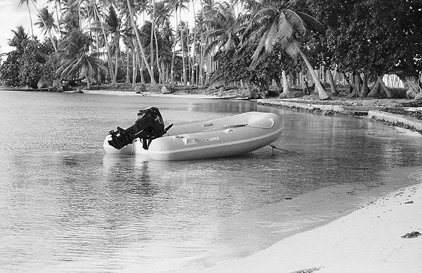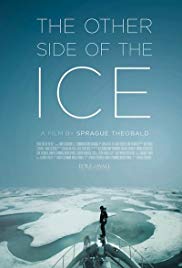 Chronicling a small pleasure boat’s challenging journey through the Northwest Passage, The Other Side of the Ice is a read that begins slowly but concludes with plenty of excitement. But unlike most offshore small boat adventures, this one takes place on a powerboat, not on a sailboat. Still, Sprague Theobald is no stranger to sailboats. A professional filmmaker with a 1982 Emmy for a documentary on the America’s Cup, he estimates he has 40,000 miles of offshore sailing experience as a delivery skipper as well as a crewmember in two-man transatlantic races and on the foredeck of Intrepid in the America’s Cup race.
Chronicling a small pleasure boat’s challenging journey through the Northwest Passage, The Other Side of the Ice is a read that begins slowly but concludes with plenty of excitement. But unlike most offshore small boat adventures, this one takes place on a powerboat, not on a sailboat. Still, Sprague Theobald is no stranger to sailboats. A professional filmmaker with a 1982 Emmy for a documentary on the America’s Cup, he estimates he has 40,000 miles of offshore sailing experience as a delivery skipper as well as a crewmember in two-man transatlantic races and on the foredeck of Intrepid in the America’s Cup race.
Having severely injured his spine during these many sailboat adventures, Sprague owns and was doing salvage-dive filmmaking from a Nordhavn 57 trawler in 2008 when the spirit moved him to attempt to take his boat though the Northwest Passage. He assembled a crew of seven and planned to complete the journey in the late summer of the following year.
The composition and interaction of the crewmembers constitute a significant portion of the book’s plot. Estranged from his children in a divorce 15 years earlier, it occurred to Sprague that sharing this challenging goal for months in the confines of a small boat might offer a chance for family reconciliation. He begins by inviting his 30-something daughter and her boyfriend, who already have years of commercial experience as cook/organizer and skipper/handyman, respectively, on crewed sailboat charters in the Atlantic. He adds a son of similar age and another son of college age. To document the cruise on film, he rounds out the crew by adding his long-time diving buddy and, finally, a videographer. (A fourth sibling joins them later). Despite his own offshore experience, Theobald designates the boyfriend as boat skipper and he, Sprague Theobald — boat owner, concept originator, and project financier — assumes the role of trip “producer.”
He chronicles their adventure dividing it into three parts: before, during, and after “The Passage.” Regrettably, he colors his recounting of Part One (Newport, Rhode Island, past Newfoundland and Greenland, and through the Baffin Sea) by detailing many verbal clashes among the crew that are seldom resolved and add little to the story.
By Part Two, The Passage itself, however, the tone of the narrative appears to get more focused. The boyfriend (skipper) and videographer, apparently responsible for most of the unrest, have been sent home and the “family” gets down to business. Here the limited window of opportunity to transit among the broken ice floes is a constant looming menace. With several lookouts posted, they pick their way through the ice. Fighting near-constant high winds, they hole up wherever they can, sometimes for days. They never stretch their legs ashore without posting an armed watch for polar bears, which they see on several occasions.
Many challenges and adventures later, they reach the Beaufort Sea and begin their final leg (Part Three). They have now only to cross the Bering Sea, round the horn of Alaska, transit the Gulf of Alaska, and complete the “inside passage” to Seattle. But by the time they reach this final leg it’s late September. “Rule of thumb around here is to be off The Chain by September 12,” said the skipper of a “hundreds of feet long” fishing boat. “You’re too small. Hell, we’re too small for some of this weather.” Nevertheless, they persevere and experience almost-disastrous events.
The Other Side of The Ice is a book that builds in interest and intensity throughout its length. I was pleased to have been able to share the experience with the “family.” To me, it yielded unaccustomed insight into offshore passagemaking in a powerboat. I feel, however, that Sprague missed a unique opportunity. He made no references to the relative sea-handling characteristics of his trawler with those of the sailboats with which he was so familiar. His extensive experience in both hull types puts him in a rare company of sailors who could expand on this subject with authority.
The Other Side of the Ice by Sprague Theobald and Allen Kreda (Skyhorse Publishing, 2012; 240 pages)


